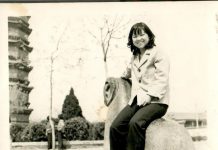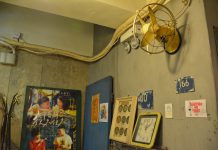Abandoned houses in 400-year-old village to be turned into holiday homes
By Jennifer Leung & Catherine Chiang
To get to the village of Lai Chi Wo, you can catch a ferry that sails from Ma Liu Shui Pier once a week, or hike two hours from Tai Po or Fanling. Once you make it there, it can feel like stepping into another world and another time – one without skyscrapers and cars. The secluded 400-year-old Hakka village is situated in Yan Chau Tong Marine Park and surrounded by a vast expanse of feng shui woodland near Sha Tau Kok in the northeastern outskirts of Hong Kong.
Today, the village is mostly deserted, with no more than 17 inhabitants, but still retains many of its original Hakka traits. All the 211 houses were built within a feng shui wall, which according to traditional belief, keeps the wealth of residents within the village. The houses are also arranged in nine horizontal rows and three vertical columns as these are lucky numbers denoting life and longevity.
At its peak, the village had a population of 1,000 but the number dropped sharply in the 1960s when many villagers emigrated overseas for a better livelihood and education for their children. Most of the houses were abandoned and fell into disrepair. In an attempt to revitalise the area and promote Hakka culture, the Hong Kong Countryside Foundation proposed a project to convert 12 deserted houses into holiday homes. The plan won the backing of the Hong Kong Jockey Club, which allocated around HK$50 million for the project, and was approved by the Town Planning Board in August this year. The first stage of the project will be finished by the coming Lunar New Year, which will present villagers with two examples of restored houses.
David Au Chi-wai, the director of the restoration project says it aims to conserve the hardware and the software in Lai Chi Wo, by this he means the houses and Hakka culture. To preserve Hakka culture, the foundation will collaborate with local villagers on creating experiential learning activities for tourists, including making Hakka traditional cuisine and making Hakka handicrafts. Some houses will be converted to provide activity rooms and visitor facilities.
To preserve the Hakka elements of the village, Au says the character-defining elements of the houses must be identified. One such element is the traditional pitched tile roofs. Lai Chi Wo has the most pitched-roofed houses out of any village in Hong Kong, giving it a classic, even antique feel. Another defining element is the traditional brick cooking stoves.
However, the process of restoration is fraught with challenges on multiple levels. The remoteness of the village makes it hard to transport construction materials and labour. Lai Chi Wo is only accessible via a two-hour hike, or by using boats small enough to traverse shallow waters and berth at the pier.
Another challenge is maintaining the balance between heritage conservation and structural integrity. The walls in the Hakka houses were mostly built using a technique called “Ram Earth”, which involved ramming earth, raw stone material and animal waste altogether to create a wall. However, this type of construction cannot be certified as structurally sound, so architects have to come up with alternatives that balance traditional design with modern requirements. A team of craftsmen will have to be found that can execute the construction well. It is also difficult to integrate infrastructure support such as fire safety, water supply and drainage into the design of the houses.
The grand vision of the project has met with mixed reactions from local villagers. Eddie Tsang, 66, runs a grocery store in the village, while his wife, who prefers to be called Auntie Tsang, operates a small stall outside the ancestral hall selling tofu pudding. Both of the Tsangs are happy about the project. Eddie says the project will not affect their lives much because the holiday homes would only accommodate a small number tourists. The couple agree there is a need to restore the abandoned houses.
“The wood in the houses has been eroded by termites, making [the houses] uninhabitable. Some even have water leaking out,” Eddie says. Auntie Tsang thinks the project will attract more visitors to Lai Chi Wo and boost their businesses.
However, not everyone in Lai Chi Wo supports the project. Some villagers are sceptical of the Foundation’s motives, while others are concerned that vistors might not take care of the environment. One such resident, is David Tsang Wai-keung, 58, who was born and raised in Lai Chi Wo. During his childhood, David disliked what he saw as the boring lifestyle in the village. He could not wait to move out when he grew up and eventually emigrated to the United Kingdom. But he returned to Lai Chi Wo in 2010 after his retirement and now values the tranquility of the village. “Lai Chi Wo is so quiet. I can go wherever I want to go without anyone bothering me. It is my favourite thing,” he says.
David is concerned about the impact the project will have on the environment in Lai Chi Wo. “Those who really want to come here [Lai Chi Wo] will regard themselves as villagers, and they will treasure the environment here,” he says. “But for those who are only coming for one night, they won’t do the same. They would just take a look of what fun there is here, then they will leave the next day. This is not how I want it [the project] to be.”
Edited by Jessica Li
















































